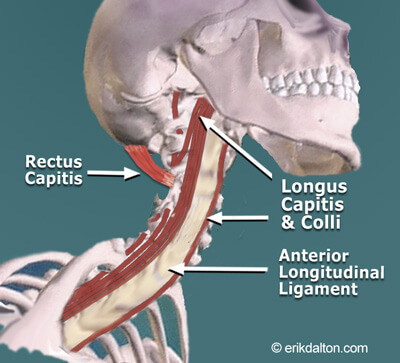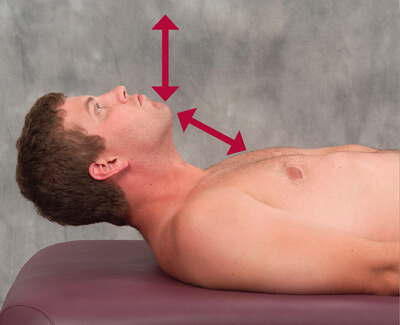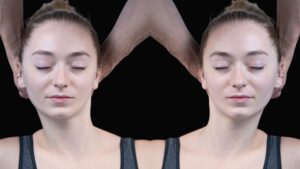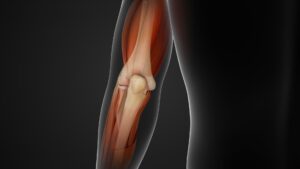
Forward bending of the head toward the chest with the client in a supine position should initiate the following firing-order sequence: longus capitis, longus colli, SCMs and anterior scalenes. The deepest intrinsic muscles must fire first starting with longus capitis (flexing the head on the neck) followed closely by longus colli, which initiates the beginning of neck flexion. The anterior scalenes and SCMs can then join forces to produce smooth head-and-neck flexion toward the chest. The most commonly seen substitution pattern is SCMs, anterior scalenes, longus colli, and longus capitis. This aberrant pattern causes the chin to reach toward the ceiling rather than tucking into the chest during the first two inches of neck flexion efforts
The sternocleidomastoid muscles (SCMs) are usually reliable neck flexors when allowed to fire in proper order. However, during the head raise test they serve as poor subs for longus capitis/colli due to their insertion at the mastoid process. When longus capitis/colli are reciprocally weakened due to hypertonic suboccipitals, these deep neck flexors give way to the powerful SCMs which are forced to fire first, causing the head to cock back into extension (not flexion). The neck flexion test is positive if the chin moves toward the ceiling in the first two inches of neck flexion.
When the neck’s normal firing-order sequence is disrupted, synergistic muscles can torsion and compress facet joints resulting in chronicdegenerative conditions such osteoarthritis and dowager’s humps. The brain often compensates by layering the area with reactive muscle guarding, which perpetuates a pain-spasm-pain cycle. This simple neck flexion test alerts the therapist as to which musculofascial tissues require graded exposure stretching and which need to be strengthened via home retraining exercises. By performing the head raise test before and after each neck session, aberrant substitution patterns can be easily identified and corrected.
Head Raise Test
GOAL: Test for neck flexion substitution patterns LANDMARK: Cervical spine
ACTION: Cervical Balancing Test.
- Therapist asks client lying in supine position to raise his head off the table.
- Therapist observes the direction of first movement of client’s chin.
- If longus capitis and colli are healthy and firing in the proper order, the very first movement of the chin will be toward the chest and not toward the ceiling.
- If the first movement of the chin is toward the ceiling, a muscle substitution pattern exists where the SCM, anterior scalenes and suboccipitals are overpowering the deep neck flexors (longus capitis and colli).










